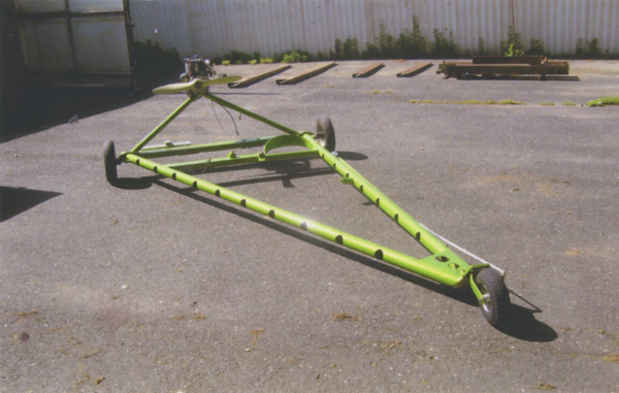Robert Grosvenor Exhibition
Karma

This event has ended.
It all began with a picture of a rat surfing a wave, accompanied by the inaudible laughter that registered palpably nonetheless. Actually, it’s part of a trio of images seen in succession like a perfectly attenuated movie. First, there’s a small black rat balanced on a red and white buoy, an unexpected surfer about to catch a wave on a bright summer’s day. Then, as the wave begins to break, he’s on it, bending with it and ready for the ride. Finally, we’re closer in on the action, and he’s up on the crest triumphantly sailing toward shore. In this little silent movie comprised of three still photos, everything is sculptural and in motion—the rat, the buoy, and the wave. The prints are intimate, no more than a few inches high and a few wider. You can hold them in your hand as easily as in your eye, and there is a modesty and a humor to them that is particularly satisfying. I came across that one photo in a retrospective catalog of Grosvenor’s many years ago, not aware of the others, of the sequence until more recently. Grosvenor is, of course, well known as a sculptor—and not for photography—working since the early ’60s and still at it, classifiably unclassifiable even if at times he seemed to fit in with what others were doing.
Looking through that catalog it’s clear that he has always gone his own way. He’s a ’60s artist in the ’60s—whatever that means—with minimal-looking objects that appear to hover in the gallery and defy gravity, most of which are no longer extant. The larger ones seem heavy and weightless at the same time. (Is this how big, solid stuff that’s adrift and floating off in space appears to scientists at NASA?) In the ’70s and ’80s, Grosvenor continues with works that are earthbound, long, low planks followed by massive, dense blocks bearing visible signs of how they came into the world. Then the sculptures start to be composed of parts, and by the mid-80s, with the familiarity of things already known, they elicit particular associations: a trailer, a bunker, a car. Here we have to keep in mind that what the artist intends and what viewers see is not always in sync. This occurs more often than not, unavoidably. From the ’90s on, his works have the feeling of props, stage sets, and theatrical situations that have been precisely composed, a process which equally relies on intuition and chance. This has always been the case, that every element is so considered, though it may be more clear to us now. Occasionally, in the catalog we come across small reproductions of photos that to varying degrees relate to the sculptures. The photos were taken by Grosvenor over the years, and they tell you something about how he sees form, how he delights in those built and improvised situations that are found in the everyday, how he picks up on certain things that later come to bear on his work. As it’s true for other sculptors, as well as for writers, painters, photographers, and filmmakers, Grosvenor is engaged by the facts of everyday life, by the vernacular, by things which might otherwise go unnoticed or don’t especially call attention to themselves. It’s one thing to be in the right place at the right time, to be receptive to what’s at the periphery, to have the patience for observation and be able to set aside our own self-importance, but a little rat doesn’t get on a buoy all by himself and go surfing, not every day of the week.
— Bob Nickas
excerpt from On Some Pictures By Robert Grosvenor
Media
Schedule
from September 04, 2014 to October 04, 2014
Opening Reception on 2014-09-04 from 18:00 to 20:00